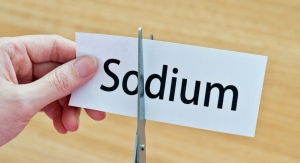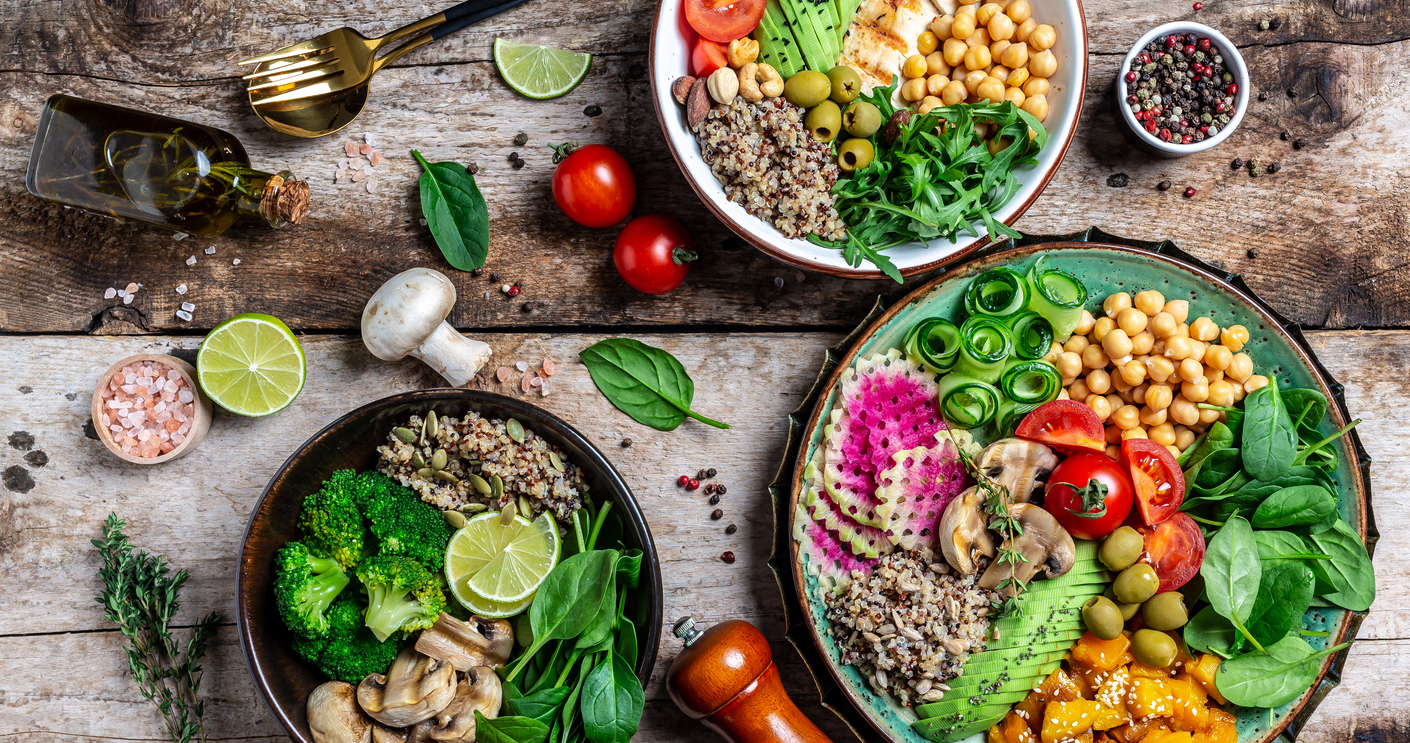
By Fanny Sung Whelan, MS, RDN, LDN
How to navigate a renal diet based on your kidneys’ needs
No matter what stage of kidney disease you’re in, all of the different diet recommendations can cause your head to spin. Pair it with other conditions you may have, and you’ve got a real recipe for confusion! So how can you sort out all of the differences in what you can and can’t eat? Here we are going to outline the diet guidelines for the different stages of kidney disease. Disclaimer: it is important to discuss any diet changes with your health care team before you proceed. Everyone’s needs will differ based on the individual. One diet does not fit all.
What diet should you follow before you start dialysis?
In general, when you are in chronic kidney disease (CKD) stages 1-4, it is important to make diet changes to help meet your new needs based on your disease. In CKD stages 1-4, the main goal is to help slow the progression of kidney failure, which may delay your need to start dialysis. The earlier a kidney-friendly diet is started, the better off you’ll be [1]. Calorie needs increase just slightly with CKD, and individual needs based on details such as age, lean body mass, and physical activity level will need to be discussed with your facility dietitian. A moderately decreased protein intake is recommended, as current research supports a more plant-focused diet although all may need not to be totally plant-based. A diet that focuses on more plant-based proteins will include beans, nuts, seeds, and legumes, especially paired with whole grains for complete combinations of amino acids [1]. Diabetic patients may need a slightly higher protein intake for better glycemic control [2].
Sodium is a mineral that is found in salt and is used in many food preparations [3]. Salt intake is high in the American diet not just from adding it to the foods we cook but also from processed foods that we consume. Salt reduction is beneficial in that it helps to control high blood pressure and reduce fluid retention [2], and it is an important step in helping to control your kidney disease [3]. It can take time adjusting to a diet that is less salty, and here are some tips that can help you achieve that goal.
- Limit salt when cooking food or when you eat. Limiting table salt, kosher salt, sea salt and iodized salt and replacing with fresh herbs, spices, lemon, limes, and vinegars as appropriate can help your food still be flavorful. If you must use salt when cooking, sprinkle on a pinch of sea salt after you are finished cooking the food. Avoid using the saltshaker, which offers less control.
- Use seasonings that do not contain salt, such as garlic powder, onion powder, chili powder, and other herbs and spices. Avoid flavored salts such as garlic salt, onion salt, celery salt, or “seasoned” salt.
- Buy canned vegetables that say “no added salt” on the label.
- Avoid cured and processed meats such as ham, bacon, sausage, hot dogs, lunch meats, bologna, and chicken tenders and nuggets.
- Avoid canned soups unless the labels say reduced sodium level, and only eat half of the can, not the whole can. Reduced sodium canned soups are still high in sodium.
- Look for lower salt or “no salt added” options for packaged foods such as peanut butter or box mixes.
- Learn to read nutrition labels. Avoid foods that have greater than 300 mg of sodium per serving or 600 mg for a frozen dinner and limit yourself to one serving of the lower sodium versions. Avoid foods that list salt in the first five items in the ingredient list.
- Avoid purchasing meats that are packaged “in a solution” or are pre-seasoned [3].
- When dining out, order items that are freshly prepared such as grilled chicken breast or fish and ask for no added salt or sauces.
Potassium is a mineral that aids in muscle movement and control. When your kidneys no longer function properly, potassium can build up in the body. This can cause changes in how your heart beats, which could lead to a heart attack. If your doctor or health care provider has told you that your potassium is high, you will need to avoid or limit certain foods [3]. Not all people with kidney disease need a potassium restriction, so before implementing this restriction, talk with your dietitian about whether or not potassium is something you need to limit. If you do need a potassium restriction, some foods to be aware of include:
- White potatoes and sweet potatoes
- Bananas
- Oranges and orange juice
- Grapefruit juice
- Tomatoes, tomato sauce, and tomato soup
- Melons like cantaloupe and honeydew
- Dried beans
- Pumpkins and winter melons
- Cooked greens such as turnip greens, kale, and Swiss chard
Phosphorus is another mineral that is important to limit or avoid. When phosphorus levels are high in your body, calcium can be pulled from your bones and deposited into your soft tissues like your heart. Bone and heart disease can become a problem, making it more likely for you to break a bone or have a heart attack [3].
Some foods that are high in phosphorus:
- Dairy products like milk, cheese, ice cream, and yogurt – try to limit to one serving a day.
- Some drinks such as colas, Pepper-type colas, certain brands of root beer, alcoholic beer, and some flavored waters and juice drinks. Ask your health care provider for more details if you have questions or concerns about the drinks you choose.
- Packaged and processed foods that contain phosphorus additives. Phosphate additives are used in some foods as a preservative or to improve the flavor, texture or moistness of some foods. Look for the word “phosphate” under the ingredients list. The word can be on its own or combined with other words such as “tetrasodium pyrophosphate.”
- Fast foods and processed foods should be limited or avoided completely.
You’re on dialysis. Now what?
You have now started dialysis. How will your diet needs change? Regardless of whether you are doing in-center hemodialysis (ICHD), peritoneal (PD) or home hemodialysis (HHD), it is safe to say that your dietary needs will be different than before. Your energy and protein needs will change, and your potassium, phosphorus, sodium, and fluid intake will need to be more closely managed [4].
As you begin dialysis, your energy needs will increase, and your mode of dialysis can affect how these needs are met. All forms of dialysis use dialysate solution to clean your blood, but the type that is used in PD contains carbohydrates. The calories from this solution will be absorbed at a rate of 200-800 calories a day. It is important to discuss your specific treatment prescription with your health care provider to get a clear idea of what your energy needs are.
 One change that may require adjusting to is the protein increase. Before you started dialysis, you followed a low to moderate protein intake, sometimes a more plant-based protein diet. Now that you are on dialysis, your protein needs will increase and, for some people, the increase will feel drastic. Due to these high protein needs, it can be difficult for dialysis patients to consume enough protein from whole foods. The protein needs of PD patients will be even higher due to the removal of protein in the dialysate solution.
One change that may require adjusting to is the protein increase. Before you started dialysis, you followed a low to moderate protein intake, sometimes a more plant-based protein diet. Now that you are on dialysis, your protein needs will increase and, for some people, the increase will feel drastic. Due to these high protein needs, it can be difficult for dialysis patients to consume enough protein from whole foods. The protein needs of PD patients will be even higher due to the removal of protein in the dialysate solution.
There have been some studies that suggest a plant-based diet can have benefits for dialysis patients, too. A plant-based diet is one that typically includes no animal proteins such as meat, fish, seafood, dairy, and eggs. Those who choose to follow a plant-based diet would consume mainly fruits, vegetables, nuts, seeds, grains, legumes, and beans. The typical dialysis diet has tended to lean away from plant-based diets, in part because these foods are higher in potassium. These restrictions can lead to a diet that is lacking in variety, resulting in limited satisfaction. Not only does liberalizing your diet to include these plant-based foods increase your satisfaction, but it may also lead to other benefits, such as improved cardiovascular health, improved inflammatory markers, healthier gut microbiota, and alleviated constipation. Another benefit of following a plant-based diet may be decreased phosphorus levels, as the phosphorus that is found in plants is less easily absorbed. If you choose to follow a plant-based diet, it is important to make your health care providers aware of your diet changes, as they may want to watch for increased potassium levels and ensure that you are getting enough of the right kinds of proteins [5].
What about PD and HHD? Are there differences in the diet recommendations for these modalities?
The short answer is sometimes! Most of the diet recommendations for PD and HHD will be very similar to ICHD with a few exceptions. In PD, your blood is cleaned by putting a solution in your abdominal cavity, and through osmosis and diffusion, the toxins are removed when the solution is drained from your abdomen. Through this process, a lot of the potassium is removed as well, much more than in ICHD. Many PD patients will need to liberalize their diets to include more high potassium foods. Some people on PD even need to take potassium supplements to keep potassium levels from staying too low. Protein needs will also be slightly higher in PD than ICHD, and because of the protein losses from draining the solution from the body, protein needs can be difficult to meet for some people. Protein supplements, such as shakes, powders, bars, and other protein supplements, are often utilized to help meet those higher needs. Calorie needs may be slightly different as well. Since the PD solution provides some calories, fewer calories in your diet will be needed to meet your needs [6].
For those who choose HHD, you will often be treated with longer dialysis times for more days of the week when compared to ICHD, leading to better dialysis and therefore better outcomes. When your labs are meeting all of the prescribed goals, your diet may be liberalized some. Adequate protein intake will still be important, as will be managing potassium, phosphorus, and fluid, but it may be easier to do so. Each person on HHD is different and unique, so it is important to talk to your health care provider to learn what your specific nutritional needs are, as they may vary from month to month [7].
You got a transplant! Now what do you do?
Congratulations if you have received your long-awaited transplant! At this stage in your journey, you will want to do whatever it takes to make sure your new kidney is being taken care of properly to prolong its life. Taking your anti-rejection medications is a big part of preserving your new kidney, but diet will play a role as well. So, how will your diet needs change?
Your diet needs will be different depending on how long you have had your new kidney. If it is soon after your surgery, you will need to be sure to get enough calories and protein to help heal from surgery and to prevent infection. You may also need to adjust your diet in response to the sudden electrolyte changes you may experience. Your new kidney will be working fervently, and electrolytes like potassium, magnesium, and sodium, may suddenly be too low [8]. Your transplant team will follow you closely in the months after your transplant to make sure your new kidney is working properly and will instruct you on any diet adjustments that you might need to make.
As you settle into a new life with your kidney transplant, your diet needs will shift focus. No longer will sudden electrolyte imbalances be as much of a concern. Now you will have to consider following a diet that will minimize diabetes, obesity, and heart disease [9]. There is limited research on the best diet for post-transplant, but there is a general consensus that following the Mediterranean and DASH diets have protective benefits, as these diets focus on reduced meat and processed foods with increased fruits and vegetables and limited sodium. The Mediterranean diet, which emphasizes high unsaturated fats found in olive oils and fish and low saturated fats found in red meat, has been shown to reduce risk of diabetes, cardiovascular disease, high blood pressure, hyperlipidemia, and mortality in kidney transplant recipients [9]. Closely following a Mediterranean diet has also been shown to improve overall kidney function in transplanted patients [10]. Incorporating the principles of the DASH diet, which reduces sodium intake and controls blood pressure, offers further protective measures to maintain the health of your new kidney [9].
As you continue living with your transplanted kidney, you will have been taking anti-rejection medications, or immunosuppressants, for a long time. These medications can cause certain side effects such as weight gain, dyslipidemia, new onset diabetes, osteoporosis, increased potassium, or decreased magnesium [8]. It will be important to address these concerns with your transplant team, so they can help tailor a diet plan that will fit your individual needs.
References:
1 – https://www.ncbi.nlm.nih.gov/pmc/articles/PMC5452225/
2- https://www.frontiersin.org/articles/10.3389/fmed.2021.654250/full
3- https://my.clevelandclinic.org/health/articles/15641-renal-diet-basics
4- https://bmcnephrol.biomedcentral.com/articles/10.1186/s12882-017-0734-z
5- https://www.karger.com/article/FullText/516249
6- https://www.niddk.nih.gov/health-information/kidney-disease/kidney-failure/peritoneal-dialysis/eating-nutrition
7- https://aakp.org/food-choices-for-home-hemodialysis/
8- https://clinicalnutritionespen.com/article/S2405-4577(16)30191-7/fulltext
9- https://www.ncbi.nlm.nih.gov/pmc/articles/PMC8258457/
10- https://cjasn.asnjournals.org/content/15/2/238




